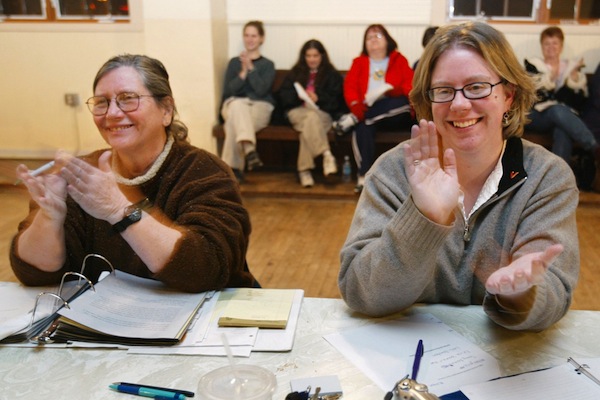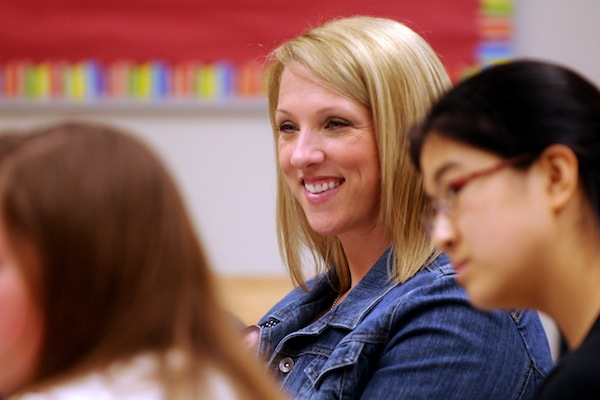After the success of Fox’s musical dramedy “Glee,” it’s no surprise that NBC snapped up “Glee” creator Ryan Murphy‘s newest sitcom, “The New Normal.”
The show centers on a premise that once wouldn’t have made it on network TV: Brian (Andrew Rannells) and David (Justin Bartha), a gay couple living in Los Angeles, decide to have a baby through surrogate Goldie (Georgia King). As one might expect from a Murphy sitcom, the cast of characters as a whole is unbelievably quirky. Goldie is a single mother to a quirky but adorable daughter, Shania (Bebe Wood), and is also granddaughter to the racist, homophobic, and acerbic Jane (Ellen Barkin).
Based on the above description, you can probably already notice that Murphy has transplanted many of “Glee’s” themes into his newest sitcom. It’s a predictable combination in Murphy’s world, where older women freely express offensive sentiment (credit Sue Sylvester, played by Jane Lynch, with setting the trend) and a cast of too quirky to be believed characters unite against a too prejudiced to be believed public. Murphy himself admitted that Brian and David could very well be an older version of “Glee’s” beloved couple Kurt Hummel (Chris Colfer) and Blaine Anderon (Darren Criss).
The series purports to introduce a “new normal” in portraying a type of family that has become increasingly common and accepted across widening swaths of America. Without a doubt, that is an admirable goal. A scene of confrontation between a homophobic, heterosexual father and Brian and David mirrors societal prejudices against gay couples, especially gay couples who choose to raise children. The more fully the media depicts non-traditional family arrangements without stereotypes, the more Americans will realize that sexual orientation does not determine personality.
Unfortunately, the show’s first three episodes failed to accomplish exactly that, by instead falling back on offensive stereotypes. In Brian, we find the prototypical gay stereotype: a fashion-obsessed, over-emotional, self-absorbed gay man who thinks of a baby as an “accessory.” On the other hand, David is the stereotypical male, a football-loving gym member who is far less emotionally expressive than his partner.
Though the show insists that Brian and David are the “new normal,” their characters affirms the stereotype that in a gay relationship, one partner plays the traditional part of the husband and the other the part of the wife. While some gay men, like some straight men, are more effeminate than others, gay relationships do not necessarily mirror the traditional gender roles of a heterosexual relationship. Instead of resisting this common misconception, Murphy allows it to go unchallenged.
Admittedly, the show is not without merit. The dialogue is often funny and clever, if sometimes forced, and the cast makes an admirable attempt to flesh out cardboard characters. In Murhpy’s defense, it is no small accomplishment write and produce the second network prime-time show about a gay couple with children, following the wildly successful “Modern Family.” Perhaps the mere exposure to a gay couple raising a family will improve Americans’ views of the gay community. There is also still time for the show to correct its flaws. Through the course of its next few episodes, the characters may grow into fully-fleshed people instead of one-dimensional generalizations.
So far, however, the show’s lack of originality has proved disappointing. As a gay man himself, Murphy should know better than to recycle the stereotypes that everyone has seen before. #






